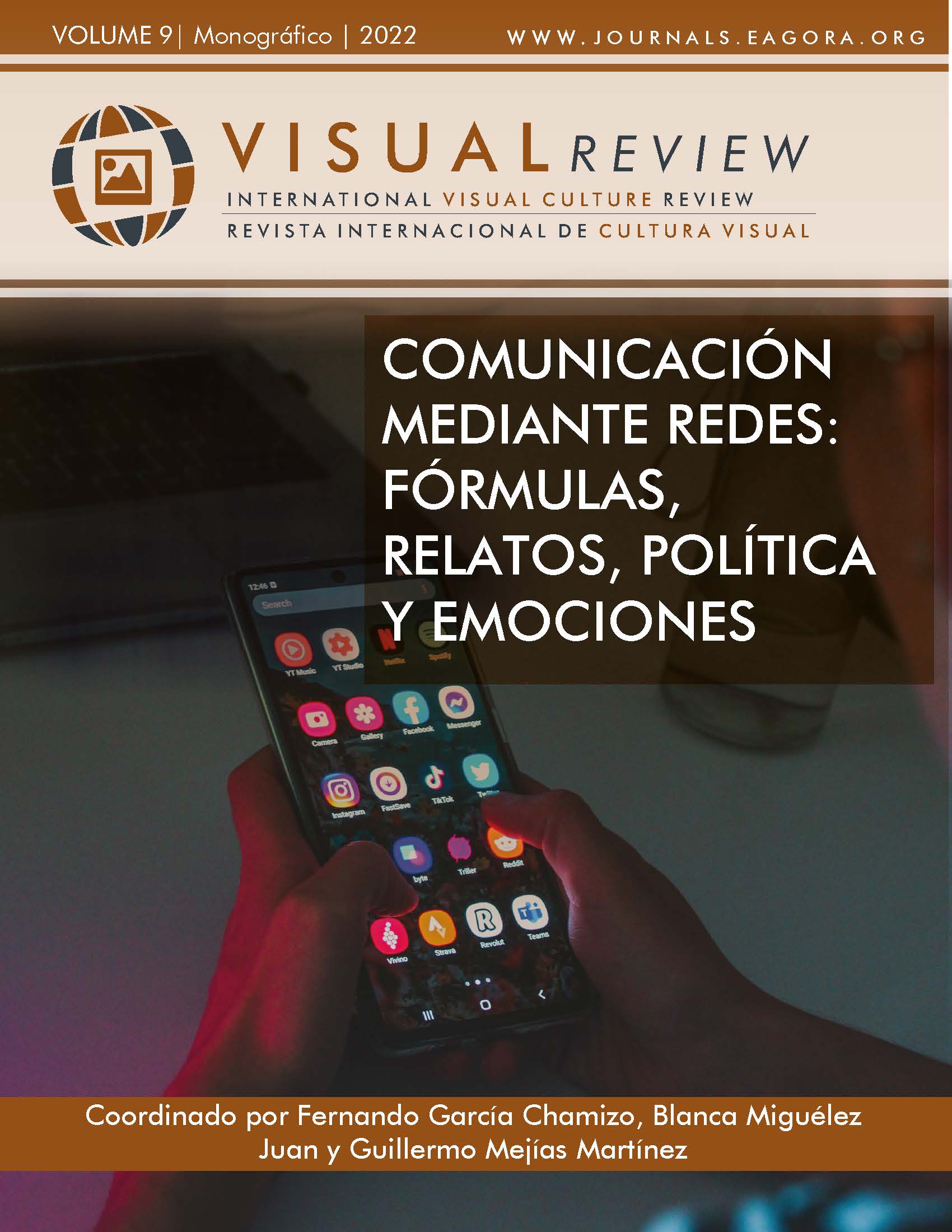Social ADS in Higher Education
Análisis de la publicidad en las redes sociales de las principales universidades españolas
DOI:
https://doi.org/10.37467/revvisual.v9.4307Keywords:
Online Advertising, Social Ads, Facebook, Instagram, EducationAbstract
Social ads offer multiple advantages to advertisers, including a rapid increase in the visibility of brands and their services. Facebook Ads and Instagram Ads are among the most popular advertising solutions worldwide. This research analyzes the advertising actions carried out on these platforms by the Spanish universities with the largest number of students. The results corroborate the continuous evolution of online advertising. This work also reveals new developments and trends of the main brands in the education sector implemented in social ads.
Downloads
Global Statistics ℹ️
|
854
Views
|
1002
Downloads
|
|
1856
Total
|
|
References
InfoAdex (2022). Estudio Infoadex de la inversión publicitaria en España 2022. https://bit.ly/3xJXllb
Ministerio de Universidades (2021). Número de estudiantes en las Universidades Españolas. https://bit.ly/3zv8cAM
Assimakopoulos, C., Antoniadis, I., Kayas, O. G., & Dvizac, D. (2017). Effective social media marketing strategy: facebook as an opportunity for universities. International Journal of Retail & Distribution Management, 45(5), 532–549. https://doi.org/10.1108/IJRDM-11-2016-0211 DOI: https://doi.org/10.1108/IJRDM-11-2016-0211
Čábyová, Ľ., & Ptačin, J. (2014). Benchmarking Comparison of Marketing Communication of Universities in Slovakia. Communication Today, 5(1), 54–69.
Diel, S. R. y Katsinas, S. (2018). University advertising and universality in messaging. Innovative Higher Education, 43(3), 171–183. https://doi.org/10.1007/s10755-018-9421-7 DOI: https://doi.org/10.1007/s10755-018-9421-7
Facebook. (s.f.). Facebook IQ Audience Insights. https://www.facebook.com/business/insights/tools/audience-insights
Facebook. (2 de marzo de 2022). Próximos pasos en el sector educativo: conoce cómo optimizar y estructurar tus estrategias de marketing en 2022. https://bit.ly/39vbeKy
Farias Muñoz, L. y Cuello Riveros, V. (2018). Percepción y autopercepción de los estereotipos de género en estudiantes universitarios de la región de Valparaíso a través de la publicidad. Revista de Comunicación, 17(1), 155-165. https://doi.org/10.26441/rc17.1-2018-a8 DOI: https://doi.org/10.26441/RC17.1-2018-A8
Favaloro, C. (2015). Marketing in the Australian higher education sector. Journal of Higher Education Policy and Management, 37(5), 490–506. https://doi.org/10.1080/1360080x.2015.1079396 DOI: https://doi.org/10.1080/1360080X.2015.1079396
Guilbault, M. (2016). Students as customers in higher education: reframing the debate. Journal of Marketing for Higher Education, 26(2), 132–142. https://doi.org/10.1080/08841241.2016.1245234 DOI: https://doi.org/10.1080/08841241.2016.1245234
Gunina, D., Komárková, L. y Pribyl, V. (2019). How to attract university applicants: exploring tertiary education advertising patterns in the czech republic. Tertiary Education and Management, 25(4), 349–366. https://doi.org/10.1007/s11233-019-09038-9 DOI: https://doi.org/10.1007/s11233-019-09038-9
Judson, K. M., Aurand, T. W., Gorchels, L. y Gordon, G. L. (2008). Building a university brand from within: University administrators’ perspectives of internal branding. Services Marketing Quarterly, 30(1), 54-68. https://doi.org/10.1080/15332960802467722 DOI: https://doi.org/10.1080/15332960802467722
Mazurek, G., Korzyński, P. y Górska, A. (2019). Social Media in the Marketing of Higher Education Institutions in Poland: Preliminary Empirical Studies. Entrepreneurial Business and Economics Review, 7(1), 117-133. https://doi.org/10.15678/EBER.2019.070107 DOI: https://doi.org/10.15678/EBER.2019.070107
Papadimitriou, A. y Blanco Ramírez, G. (2015). Exploring advertising in higher education: an empirical analysis in North America, Europe, and Japan. Tertiary Education and Management, 21(2), 99–110. https://doi.org/10.1080/13583883.2014.999702 DOI: https://doi.org/10.1080/13583883.2014.999702
Sujon, Z., Viney, L. y Toker-Turnalar, E. (2018). Domesticating Facebook: the shift from compulsive connection to personal service platform. Social Media + Society, 4(4) https://doi.org/10.1177/2056305118803895 DOI: https://doi.org/10.1177/2056305118803895
Downloads
Published
How to Cite
Issue
Section
License
Those authors who publish in this journal accept the following terms:
-
Authors retain copyright.
-
Authors transfer to the journal the right of first publication. The journal also owns the publishing rights.
-
All published contents are governed by an Attribution-NoDerivatives 4.0 International License.
Access the informative version and legal text of the license. By virtue of this, third parties are allowed to use what is published as long as they mention the authorship of the work and the first publication in this journal. If you transform the material, you may not distribute the modified work. -
Authors may make other independent and additional contractual arrangements for non-exclusive distribution of the version of the article published in this journal (e.g., inclusion in an institutional repository or publication in a book) as long as they clearly indicate that the work was first published in this journal.
- Authors are allowed and recommended to publish their work on the Internet (for example on institutional and personal websites), following the publication of, and referencing the journal, as this could lead to constructive exchanges and a more extensive and quick circulation of published works (see The Effect of Open Access).













